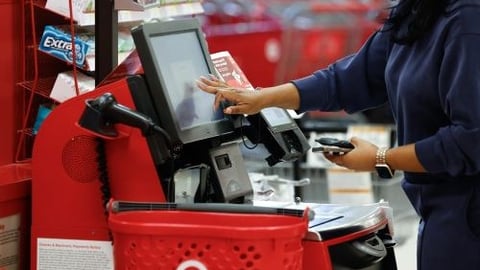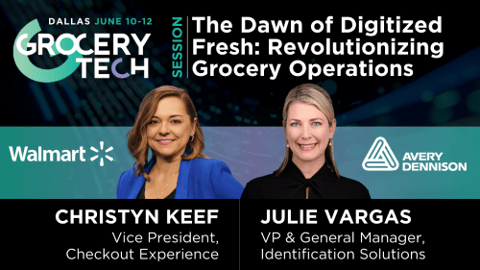Amazon Makes Sorting Packages Easier for Delivery Station Employees
Amazon is testing new technology that will help employees at delivery stations more efficiently identify and sort packages before they’re loaded onto delivery vans.
Vision Assisted Sort Station (VASS) uses computer vision and projection technology similar to the Vision Assisted Package Retrieval (VAPR) system in Amazon’s delivery vans.
[RELATED: GroceryTech 2025 to Demystify AI and Computer Vision]
When packages arrive at Amazon delivery stations from local fulfillment and sortation centers, employees sort and stow them in bags that then get loaded into vans by delivery route to customers’ doorsteps. During this process, VASS will create a static buffer area, holding multiple packages, which it spotlights with visual cues to help employees quickly identify the right ones without the need to look at a screen or device. In parallel, the destination bags are brought to employees, so they no longer have to walk.
"VASS is a powerful example of how we're innovating at Amazon to make work easier for our teams," said Chris Harris, Amazon’s director of logistics engineering. "VASS helps simplify decision-making for our employees and speeds up the process of getting packages where they need to go.”
Amazon is exploring an under-roof application in its delivery stations for the technology so the cameras can scan packages on a conveyor belt when they arrive at a stow station.
VASS shines a green O, indicating to the employee which package needs to be picked (and a red shape on those that shouldn’t be picked) and placed in the corresponding destination bag, which is brought directly to the employee.
“It's sophisticated technology under the hood,” Harris added, “but what our employees experience is something simple, intuitive and genuinely helpful."
Based on early VAPR tests, Amazon teams saw a 67% reduction in perceived physical and mental effort for drivers and more than 30 minutes saved per route.
Early testing of VASS at Amazon’s Innovation Center DNZ3, in Dortmund, Germany, showed promising results:
- Reduced mental load for employees, who no longer need to memorize destinations or constantly reference their handheld devices or screens
- Increased accuracy with a substantial decrease in mis-sorts at pilot stations
- Greater efficiency through improved sort time per package, as employees were able to manage a buffer of up to 10 packages simultaneously, versus just two with conventional methods
- Enhanced flexibility, because the system decouples sorting performance from machine sequencing, allowing employees to work at their own pace
Currently in pilot phase, VASS is scheduled for implementation across some of Amazon’s delivery stations in Europe and the United States, starting in 2027.
This technology builds on Amazon's VAPR, which is embedded into delivery vans that automatically project a green “O” on all packages that need to be delivered once the van arrives at a delivery location, and red shapes on all other packages. Through an audio and visual cue, VAPR prompts the driver to confirm that it has found the right packages before the driver even needs to enter the cargo area.
Seattle-based Amazon is No. 2 on The PG 100, Progressive Grocer’s 2024 list of the top food and consumables retailers in North America. The company was also named among PG’s Retailers of the Century and appeared on its Most Sustainable Grocers list.






